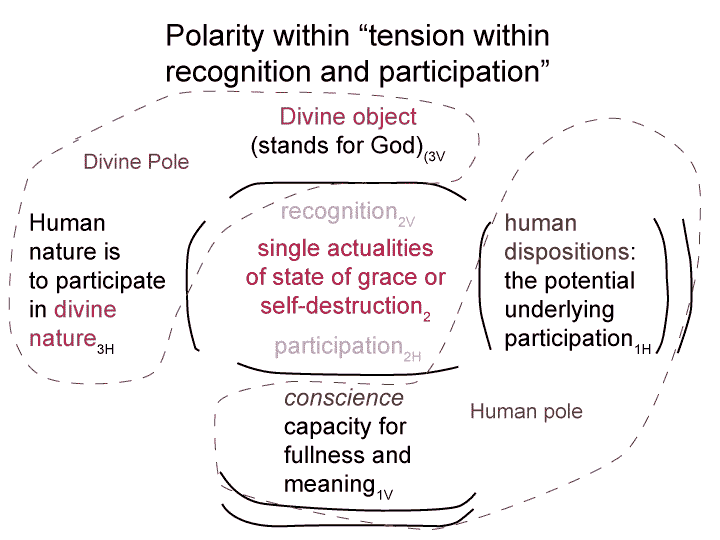Man and Sin by Piet Schoonenberg (1964) 2.1DX
Summary of text [comment] page 69
[Schoonenberg used the word ‘counterpole’ to describe the difference between the source and the subject of grace.
The word ‘counter’ implies a resonance between more than one polarity.
The intersection containing the tension within recognition and participation contains a polarity between divine and human poles.
Intersections contain a single actuality that, in turn, fit into a nested form.
The nested form that embodies the single actuality of grace or self-destruction portrays an additional human and divine polarity.]

